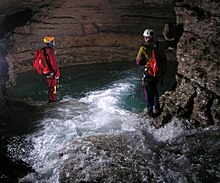
Subterranea are underground structures, both natural (such as caves) and human-made (such as mines). [1]
Contents
Some subterranea and related topics include:

Subterranea are underground structures, both natural (such as caves) and human-made (such as mines). [1]
Some subterranea and related topics include:
The following is a list of examples of structures which are or can be underground.